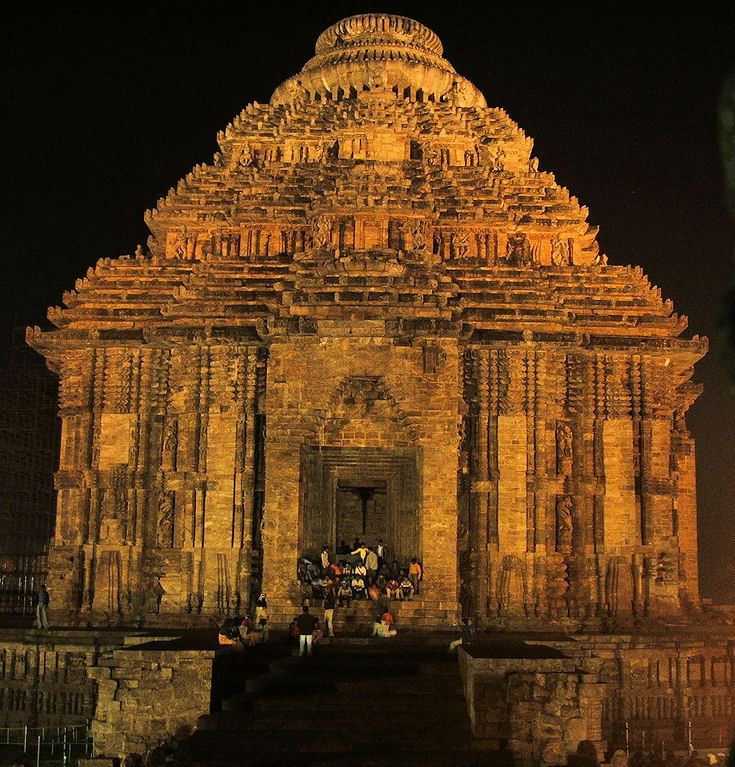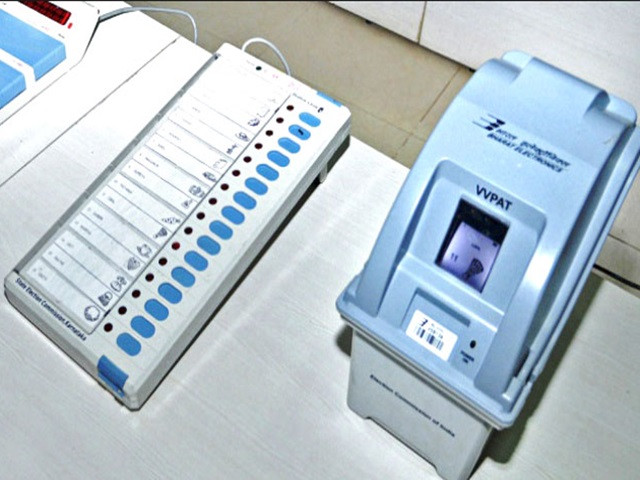|
Sakhigopal
Sakhigopal or Satyabadi is a town and Notified Area Council in Puri district in the Indian state of Odisha. About Sakhigopal is one of the Hindu pilgrimage centres in Odisha for the Sakhigopal Temple. The name Sakhigopal literally means '' Gopal (Srikrishna) being a witness''. Before the establishment of Sakhigopal Temple, the place was called Satyabadi and is still known by this alternative name. Earlier, Sakhigopal village was under Satyabadi Block which was spread over an area of 282.34 km2. It has 169 inhabited villages, 4 uninhabited villages. On 13 March 2024, the Government of Odisha upgraded Sakhigopal village to be a NAC. Demographics According to the 2011 Census, Satyabadi Community Block had a population of 1,96,136 with 99,599 (50.8%) male and 96,537 (49.2%) female population. There are a total of 43,350 households. The population density is 695 people per km2. Followers of Hinduism form the majority of the population, while Muslims and Christians are a small min ... [...More Info...] [...Related Items...] OR: [Wikipedia] [Google] [Baidu] |
Sakhigopal Temple
Sakhigopal Temple formally known as Satyabadi Gopinatha Temple is a medieval temple dedicated to Lord Gopinatha located in Sakhigopal on the Puri Bhubaneshwar highway in Odisha. The temple is built in the Kalinga Architecture style. Origin It is said that a poor young man of the village, later named Sakshigopala, fell in love with the daughter of the village headman. However, being of a higher economic status, the headman opposed marriage between this young man and his daughter. The villagers, including the headman and the young man, went on a pilgrimage to Vrindavan. The village headman fell ill and was abandoned by fellow villagers. The young man tended to him so well that he soon got well, and, in gratitude, promised his daughter in marriage to the young man. As soon as they returned to the village, the headman went back on his promise, asking the young man to produce a witness in support of his claim. Lord Gopala, impressed by the young man's devotion, agreed to come and ... [...More Info...] [...Related Items...] OR: [Wikipedia] [Google] [Baidu] |
Puri District
Puri district is a coastal district of the Odisha state of India. It has one Administrative subdivision, sub-division, 11 Tehsils, tahasils and 11 Block (country subdivision), blocks and comprises 1722 revenue villages. Puri is the only Nagar Palika, municipality of the district. Konark, Nimapada, Pipili, Satyabadi and Kakatpur are the Nagar Panchayat, NACs in this district and Brahmagiri, Odisha, Brahmagiri is a semi-urban town. Name The district is named after its capital city, Puri. In Sanskrit Language, Sanskrit, the word "Puri" means town or city. The city is an important seat of Vaishnavism, and is home to the noted Jagannath Temple, Puri, Jagannath Temple built by Anantavarman Chodaganga in the mid 12th century CE. History Pre-history Like many other parts of Odisha, the Puri district contains Pleistocene river gravels and silts. So far, no prehistoric stone tools have been found in this region, although they are found in similar formations (river gravels, secondary la ... [...More Info...] [...Related Items...] OR: [Wikipedia] [Google] [Baidu] |
Satyabadi High School
Satyabadi Bana Bidyalaya (now Satyabadi High School, Sakhigoal) is an Indian school in Sakhigopal, Odisha. It is a pre-secondary and Secondary school, located at Sakhigopal a part of Puri district, in the Indian state of Odisha. It was established by writer and social worker Utkalamani Gopabandhu Das in British India in 1909. History Established in 1905 as an experiment in the field of education by Gopabandhu Das, the school started with 19 students. According to Das, schools had to become man-making industries and had to be instrumental in the harmonious development of a child's personality. As a model for other schools, children from all castes and classes sat, dined, lived and studied together. There was ample scope in the school for co-curricular activities including social service, exercise, kavi sammelans. The school aimed to cultivate ideals of patriotism in the hearts of students. Sir Ashutosh Mukherjee and many other scholars were impressed by its simplicity and ... [...More Info...] [...Related Items...] OR: [Wikipedia] [Google] [Baidu] |
States And Territories Of India
India is a federalism, federal union comprising 28 federated state, states and 8 union territory, union territories, for a total of 36 subnational entities. The states and union territories are further subdivided into 800 List of districts in India, districts and smaller administrative divisions of India, administrative divisions by the respective subnational government. The states of India are self-governing administrative divisions, each having a State governments of India, state government. The governing powers of the states are shared between the state government and the Government of India, union government. On the other hand, the union territories are directly governed by the union government. History 1876–1919 The British Raj was a very complex political entity consisting of various imperial divisions and states and territories of varying autonomy. At the time of its establishment in 1876, it was made up of 584 princely state, constituent states and the prov ... [...More Info...] [...Related Items...] OR: [Wikipedia] [Google] [Baidu] |
Indian Standard Time
Indian Standard Time (IST), sometimes also called India Standard Time, is the time zone observed throughout the Republic of India, with a time offset of UTC+05:30. India does not observe daylight saving time or other seasonal adjustments. In military and aviation time, IST is designated E* ("Echo-Star"). It is indicated as ''Asia/Kolkata'' in the IANA time zone database. History The Indian Standard Time was adopted on 1 January 1906 during the British era with the phasing out of its precursor Madras Time (Railway Time), and after Independence in 1947, the Union government established IST as the official time for the whole country, although Kolkata and Mumbai retained their own local time (known as Calcutta Time and Bombay Time) until 1948 and 1955, respectively. The Central observatory was moved from Chennai to a location at Shankargarh Fort in Allahabad district, so that it would be as close to UTC+05:30 as possible. Daylight Saving Time (DST) was used brief ... [...More Info...] [...Related Items...] OR: [Wikipedia] [Google] [Baidu] |
Election Commission Of India
The Election Commission of India (ECI) is a constitutional body established by Constitution of India, the Constitution of the Republic of India empowered to conduct free and fair elections in the Republic of India. It is headed by a Chief Election Commissioner of India, chief election commissioner and consists of two other Election Commissioner of India, election commissioners as constituent members. Structure In 1950, the Election Commission of India was established as a single member body. As per ''The Election Commissioner Amendment Act, 1989'', the commission was made a multi-member body headed by a Chief Election Commissioner of India, chief election commissioner and two other Election Commissioner of India, election commissioners, who were appointed to the commission for the first time on 16 October 1989. On 1 January 1990, it reverted back to a single member body after the post of election commissioner was abolished, before being restored to the three member structur ... [...More Info...] [...Related Items...] OR: [Wikipedia] [Google] [Baidu] |
Member Of The Legislative Assembly (India)
A member of the Legislative Assembly (MLA) is a representative elected by the voters of an electoral district (constituency) to the legislature of States of India, State government in the Indian system of government. From each constituency, the people elect one representative who then becomes a member of the Legislative Assembly (MLA). Each state has between seven and nine MLAs for every Member of parliament, Lok Sabha, Member of Parliament (MP) that it has in the Lok Sabha, the lower house of India's Bicameralism, bicameral Parliament of India, parliament. There are also members in three unicameral legislatures in Union Territories: the Delhi Legislative Assembly, Jammu and Kashmir Legislative Assembly and the Puducherry Legislative Assembly. Only a Member of the Legislative Assembly can work as a minister for more than 6 months. If a non-Member of the Legislative Assembly becomes a Chief Minister or a minister, he must become an MLA within 6 months to continue in the job. Only ... [...More Info...] [...Related Items...] OR: [Wikipedia] [Google] [Baidu] |
Odia University
Odia University, is a state language research university situated in Satyabadi on the eastern coast of Odisha, India. About After the Odia language was recognised as a Classical language of India on 20 February 2014, it was decided to establish a university solely dedicated to the research, promotion and study of Odia literature, linguistics, history, and culture. The Odia University, is established as a language university under the ''Odia University Act, 2017'', passed by the Odisha Legislative Assembly. The university's first academic session began on 5 September 2023. The permanent campus of the university was inaugurated by Odisha Chief Minister Naveen Patnaik on 24 January 2024 near Satyabadi Bana Bidyalaya which was established by the famous ''Panchasakha'' (Pandit Gopabandhu Das, Acharya Harihar, Pandit Nilakantha Das, Krupasindhu Mishra and Godabarish Misra). Academics Currently the university offers an integrated M.A. Ph.D. program. Schools * School of Odia Langua ... [...More Info...] [...Related Items...] OR: [Wikipedia] [Google] [Baidu] |




